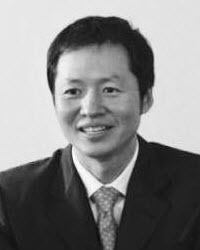[Management in Korea] Can Korea create its own Silicon Valley?
By Korea HeraldPublished : Aug. 12, 2018 - 10:56
Management in Korea is a regular column written by the members of Egon Zehnder Seoul, touching on various aspects of Korean enterprises and business leaders and offering management tips. -- Ed.
Technological prowess is a key element of Korea’s economic identity. Samsung, LG and SK Group are global giants, and the country is considered a leader in innovation and connectivity. But these achievements are the result of conscious and sustained investments in education and industrial infrastructure that were made throughout the second half of the 20th century. We cannot assume that this success will automatically continue into the digital era, which requires a new set of competencies and business models. And indeed, Korean business leaders on the front line of global competition are concerned when they look into the future.
In a recent survey by the Economist Intelligence Unit of the confidence of executives in their local economy’s ability to support digital transformation, Seoul ranked 27th -- behind cities with much less of a reputation for digital innovation, including Milan and Johannesburg.
Technological prowess is a key element of Korea’s economic identity. Samsung, LG and SK Group are global giants, and the country is considered a leader in innovation and connectivity. But these achievements are the result of conscious and sustained investments in education and industrial infrastructure that were made throughout the second half of the 20th century. We cannot assume that this success will automatically continue into the digital era, which requires a new set of competencies and business models. And indeed, Korean business leaders on the front line of global competition are concerned when they look into the future.
In a recent survey by the Economist Intelligence Unit of the confidence of executives in their local economy’s ability to support digital transformation, Seoul ranked 27th -- behind cities with much less of a reputation for digital innovation, including Milan and Johannesburg.


From our perspective as leadership advisers, not just to Korean companies but to organizations elsewhere in the world, we agree that there is reason for concern. Much of Korea’s business culture was designed for an earlier time. But we also have no doubt that Korea can make the transition from industrial and technological power to digital stronghold if it confronts certain issues directly and responds accordingly. The government’s commitment to creating a startup hub in Pangyo, Gyeonggi Province, and fostering technologies like artificial intelligence and augmented reality, for example, is a welcome development.
But this initiative cannot succeed in isolation.
Close examination of innovation hubs shows that a vibrant startup scene needs to be part of a larger ecology that allows for a fluid exchange of ideas between those startups and midsized companies and large conglomerates, as well as universities and research institutes.
Collaboration between companies and academia moves next-generation ideas out of the lab faster and creates more productive internships and on-the-job training. Partnerships and licensing agreements between resource-rich large companies and agile small and midsized enterprises speed up the commercialization of new products and technologies. It is no accident that Silicon Valley is the textbook example of these potent interactions.
There are several things that chaebol and other large Korean enterprises can do to help create a Korean Silicon Valley.
First, these types of collaborations require more than just the limited incubation arrangements that have been established. They need a wide array of “win-win” business deals in which each side respects the integrity of the other and is invested in the other’s success.
This way of thinking is very different from the “win-lose” culture typical in Korea in which ideas are closely guarded and outside parties are viewed with suspicion. Large Korean organizations should closely study the corporate development function at Western enterprises, where the successful management of these arrangements is an important source of competitive advantage in innovation-intensive industries. For example, establishing “win-win” collaborations with small and midsized companies and academia has been essential in helping Western pharmaceutical companies make the shift to therapies based on genetics and other life science breakthroughs.
Fair collaboration agreements that are honored in both letter and spirit will lead to exchanges of ideas and resources. But innovation hubs also need movement of people. Chaebol can help make this happen by becoming magnets for digital talent. To do so, chaebol must reconfigure their talent and retention strategies so that they are competitive not just within Korea but on the global stage.
The rising generation of millennial leaders will not stay with the same organization -- or even within Korea -- out of a sense of loyalty to company or country: Witness the success that Chinese tech firms have had in luring away Korean talent.
Korean human resource executives need to make honest assessments of how their company’s compensation, benefits, working conditions and career opportunities compare with firms elsewhere, and then need to be strong advocates for change where it is needed. Government actions like reining in the length of the workweek are merely guardrails against harmful excess. Korean organizations need to reach beyond those minimal requirements to create workplaces and career pathways that are genuinely enticing.
In addition to improving the work environment, chaebol must also more effectively harness the digital leadership they have: Sought-after digital executives want to be part of teams that truly have an impact in their organizations. Many legacy enterprises -- not just in Korea but around the world -- struggle with how best to integrate disruptive innovation in their organizational structure. Some create independent organizations that are given the latitude to develop their own cultures; others create a digital function within the legacy enterprise headed by a chief digital officer. That digital function might be a self-contained unit that drives digital initiatives throughout the organization, or it might have a matrix structure with digital executives embedded in individual business units. This is a difficult issue precisely because there is no one correct approach and each possibility brings its own pluses and minuses.
However, Korean organizations facing this issue often make a critical mistake regardless of the model they choose. Senior digital leaders, including those at the CDO level, are often considerably younger than other chief experience officer-level executives. Because age and seniority play a large role in the hierarchy of Korean organizations, CDOs often report not to the CEO but to someone one or two levels below. But legacy firms that have undergone successful digital transformations know that those transformations must be led from the top -- which means not only active CEO and board support but that the CDO has a seat at the table where the strategic decisions are being made.
Korea has all the elements to create its own Silicon Valley and to maintain its innovation leadership. The government has taken steps to make this a reality; those initiatives must be matched by a corresponding commitment and investment by leading Korean businesses to create the environment for innovation to thrive.
But this initiative cannot succeed in isolation.
Close examination of innovation hubs shows that a vibrant startup scene needs to be part of a larger ecology that allows for a fluid exchange of ideas between those startups and midsized companies and large conglomerates, as well as universities and research institutes.
Collaboration between companies and academia moves next-generation ideas out of the lab faster and creates more productive internships and on-the-job training. Partnerships and licensing agreements between resource-rich large companies and agile small and midsized enterprises speed up the commercialization of new products and technologies. It is no accident that Silicon Valley is the textbook example of these potent interactions.
There are several things that chaebol and other large Korean enterprises can do to help create a Korean Silicon Valley.
First, these types of collaborations require more than just the limited incubation arrangements that have been established. They need a wide array of “win-win” business deals in which each side respects the integrity of the other and is invested in the other’s success.
This way of thinking is very different from the “win-lose” culture typical in Korea in which ideas are closely guarded and outside parties are viewed with suspicion. Large Korean organizations should closely study the corporate development function at Western enterprises, where the successful management of these arrangements is an important source of competitive advantage in innovation-intensive industries. For example, establishing “win-win” collaborations with small and midsized companies and academia has been essential in helping Western pharmaceutical companies make the shift to therapies based on genetics and other life science breakthroughs.
Fair collaboration agreements that are honored in both letter and spirit will lead to exchanges of ideas and resources. But innovation hubs also need movement of people. Chaebol can help make this happen by becoming magnets for digital talent. To do so, chaebol must reconfigure their talent and retention strategies so that they are competitive not just within Korea but on the global stage.
The rising generation of millennial leaders will not stay with the same organization -- or even within Korea -- out of a sense of loyalty to company or country: Witness the success that Chinese tech firms have had in luring away Korean talent.
Korean human resource executives need to make honest assessments of how their company’s compensation, benefits, working conditions and career opportunities compare with firms elsewhere, and then need to be strong advocates for change where it is needed. Government actions like reining in the length of the workweek are merely guardrails against harmful excess. Korean organizations need to reach beyond those minimal requirements to create workplaces and career pathways that are genuinely enticing.
In addition to improving the work environment, chaebol must also more effectively harness the digital leadership they have: Sought-after digital executives want to be part of teams that truly have an impact in their organizations. Many legacy enterprises -- not just in Korea but around the world -- struggle with how best to integrate disruptive innovation in their organizational structure. Some create independent organizations that are given the latitude to develop their own cultures; others create a digital function within the legacy enterprise headed by a chief digital officer. That digital function might be a self-contained unit that drives digital initiatives throughout the organization, or it might have a matrix structure with digital executives embedded in individual business units. This is a difficult issue precisely because there is no one correct approach and each possibility brings its own pluses and minuses.
However, Korean organizations facing this issue often make a critical mistake regardless of the model they choose. Senior digital leaders, including those at the CDO level, are often considerably younger than other chief experience officer-level executives. Because age and seniority play a large role in the hierarchy of Korean organizations, CDOs often report not to the CEO but to someone one or two levels below. But legacy firms that have undergone successful digital transformations know that those transformations must be led from the top -- which means not only active CEO and board support but that the CDO has a seat at the table where the strategic decisions are being made.
Korea has all the elements to create its own Silicon Valley and to maintain its innovation leadership. The government has taken steps to make this a reality; those initiatives must be matched by a corresponding commitment and investment by leading Korean businesses to create the environment for innovation to thrive.

By Eugene Kim and Nam You-sun
Eugene Kim is the managing partner of advisory firm Egon Zehnder Seoul. He can be reached at Eugene.Kim@egonzehnder.com. Nam You-sun is the research analyst at Egon Zehnder Seoul. She can be reached at Yousun.nam@egonzehnder.com. -- Ed.
Eugene Kim is the managing partner of advisory firm Egon Zehnder Seoul. He can be reached at Eugene.Kim@egonzehnder.com. Nam You-sun is the research analyst at Egon Zehnder Seoul. She can be reached at Yousun.nam@egonzehnder.com. -- Ed.
-
Articles by Korea Herald



















![[Today’s K-pop] Treasure to publish magazine for debut anniversary](http://res.heraldm.com/phpwas/restmb_idxmake.php?idx=642&simg=/content/image/2024/07/26/20240726050551_0.jpg&u=)